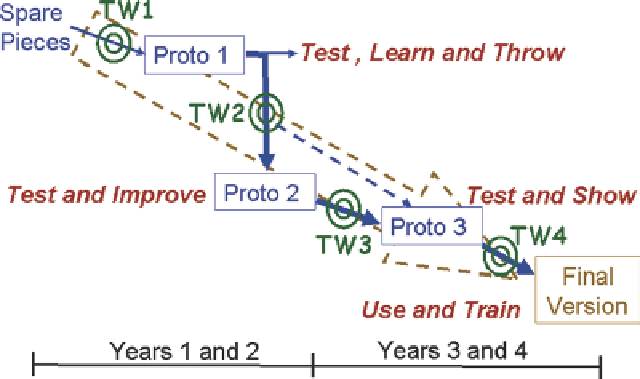Environmental Engineering Reference
In-Depth Information
use of case studies, timing of testing, independent testers, multidisciplinarity,
separating end-users and modellers. Where possible we suggest potential solu-
tions to problems encountered during SEAMLESS-IF.
Use of Prototypes
As illustrated in Fig.
10.1
the development of SEAMLESS-IF proceeded from a set
of individual components to an integrated framework. This process was made
operational through the use of prototypes and transition workshops as illustrated in
Fig.
10.3
. The first prototype both ran parallel with and was the support of the
conceptual evaluation, i.e. assuring that the integrated framework would be internally
consistent and suited for addressing the purpose for which it is designed. To assure
alignment with end-user demands it was oriented at end-users. It consisted of a series
of mock-ups or screen shots showing how the integrated framework would look like
and what kind of functionalities it would have. These mock-ups were found to be an
important tool not only for the conceptual evaluation, but also to generate a common
understanding among the various disciplines involved in building the framework.
Whereas the first prototype did not have any functionality in terms of running
analyses, the subsequent prototypes did have increasing functionalities allowing the
evaluation to switch to technical testing of the framework and its components.
The switch from one prototype to the next was marked by so-called transition
workshops. These workshops brought together developers and testers to translate the
assessment of the prototype into (prioritized) requirements for the next prototype.
Fig. 10.3
The role of prototype testing and transition workshops in the development path of
SEAMLESS-IF

